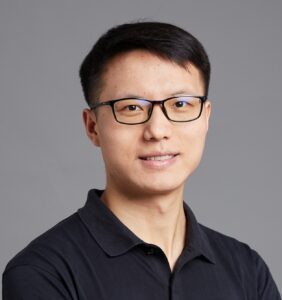Posted By: The American Journal of Human Genetics, AJHG
Each month, the editors of The American Journal of Human Genetics interview an author of a recently published paper. This month, we check in with Ji Tang, PhD (@jitang1024.bsky.social, @JiTang1024) to discuss his recent paper “A genealogy-based approach for revealing ancestry-specific structures in admixed populations.”

AJHG: What motivated you to start working on this project?
JT: This project emerged from an empirical problem we were facing in a separate analysis. In that analysis, we wanted to examine the pattern of genetic variation driven by unique ancestry in human populations in order to prioritize individuals for whole-genome sequencing. However, we realized our analysis would always be confounded by other ancestry components due to recent admixture. We kept obtaining unsatisfactory results, even in simulations, when applying existing methods designed to reveal ancestry-specific structure. Then, in discussion with my postdoc advisor, Charleston Chiang, I was encouraged to develop a new method that could improve our ability to detect ancestry-specific population structure.
AJHG: What about the paper/project most excites you?
JT: The most exciting part is that we introduce a new approach and, more importantly, a new perspective for the computation of genetic relatedness, which is a concept fundamental to human genetics. The standard practice for the computation involves using the variance of allele frequencies as a weighting function to up-weight rare variants (consequently, young rare alleles and ancient rare alleles are up-weighted equally). There has been extensive discussion about this weighting function; however, the symmetry between young, rare, and ancient rare alleles is generally maintained. In this project, we introduced a scheme to upweight the recent branches on genealogical trees (which tend to harbor young rare alleles) over the ancient branches (which tend to harbor ancient rare alleles). In this sense, we introduced an evolutionary concept into genetic relatedness, breaking the symmetry with respect to allele frequencies by emphasizing the age of the alleles and branches, which results in better resolution of recent population structure. Although it is a small contribution, I am excited to have made this contribution to the field of human genetics.
AJHG: Thinking about the bigger picture, what implications do you see from this work for the larger human genetics community?
JT: Thinking about the bigger picture, this work could have profound implications for the human genetics community from two aspects.
First, as introduced in the paper, the method we presented improves the inference of fine-scale substructure within ancestry components and the correction of population stratification in genome-wide association studies. This could improve our ability to mitigate the confounding effects in genome-wide association studies, leading to more robust and interpretable findings in studies of disease and complex traits in underrepresented populations, ultimately paving the way for more precise and equitable genetic research.
Second, as mentioned above, we introduced an evolutionary perspective into the computation of genetic relatedness by emphasizing young rare alleles over ancient rare alleles. This differs from the standard practice in computing genetic relatedness. We have taken the first step towards this new perspective, and I expect future methods will further formalize or improve upon this framework, ultimately informing us more about the evolutionary histories of diverse populations.
AJHG: What advice do you have for trainees/young scientists?
JT: It’s easy to get excited about new ideas, but time flies; we might need to remind ourselves what we truly care about and focus on the most relevant things to push progress steadily forward. Second, it is important to maintain an open mindset and try to think from other people’s perspectives. Disagreements with collaborators may be due to the limitations of our knowledge, but they can also be an opportunity to improve our knowledge. Sometimes, we may have trouble reaching a consensus despite our best efforts, but this mindset can help us find a better balance between standing firm and compromising for effective collaboration, which is so important. Finally, building connections with peers is very crucial. Maintaining regular communication with them can enable a deeper understanding and appreciation of our research, bring in new career opportunities, and add a lot of fun.
AJHG: And for fun, tell us something about your life outside of the lab.
JT: Outside work, I like exercises such as running and swimming, which make me feel more energetic. When work is not very busy, cooking is a great way for me to relax. I also enjoy chatting with friends. I am an introvert; usually, they call me more than I call them, and I really appreciate it.
Ji Tang, PhD, is a Postdoctoral Research Fellow in the lab of Prof Charleston W.K. Chiang at the Center for Genetic Epidemiology, University of Southern California.
